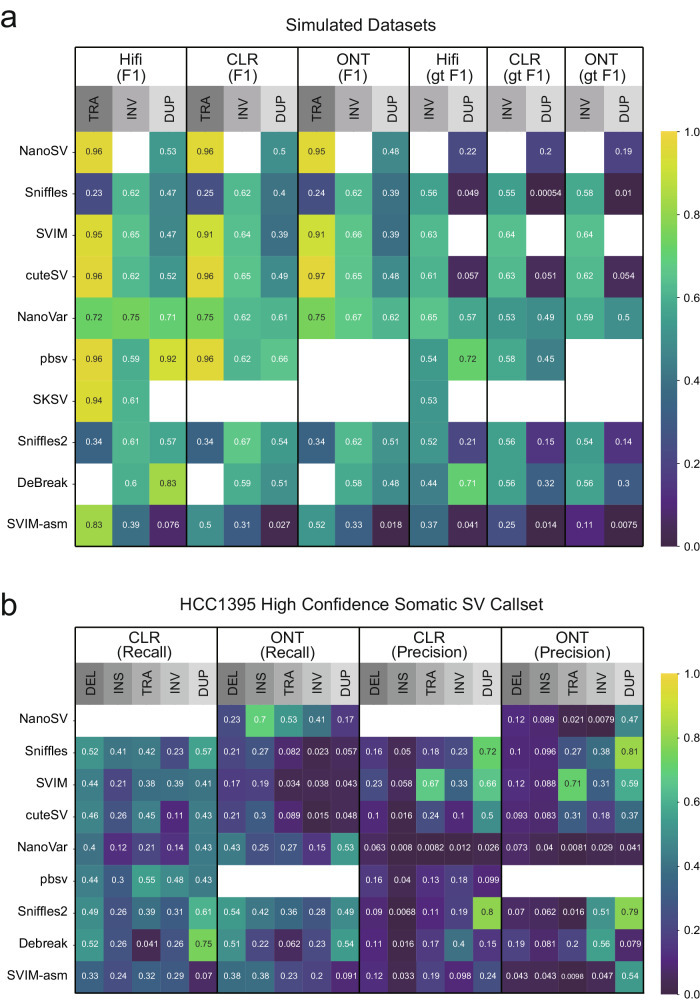Liu YH, Luo C, Golding SG, Ioffe JB, Zhou XM. Tradeoffs in alignment and assembly-based methods for structural variant detection with long-read sequencing data. Nat Commun. 2024 Mar 19;15(1):2447. doi: 10.1038/s41467-024-46614-z. PMID: 38503752; PMCID: PMC10951360.
Researchers have systematically evaluated a range of tools designed to detect structural variants (SVs) in genomes using long-read sequencing, a method that provides more comprehensive genomic insights. The study compares 14 alignment-based methods, including advanced deep learning options, with four assembly-based methods, revealing that while assembly-based tools more effectively detect larger SVs and are robust against various testing conditions, alignment-based methods offer greater accuracy at lower sequencing coverages and excel at identifying complex SVs. This benchmarking effort helps users select the most suitable tools for different research scenarios and lays a foundation for future improvements in genomic analysis tools.
